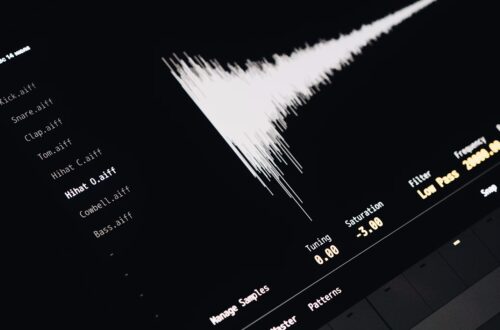Every CTO making AI investments in 2025 faces the same dilemma — which model actually performs best for real-time voice applications?
The options are strong and growing: OpenAI’s GPT-4o, Anthropic’s Claude, and Google’s Gemini lead the enterprise pack.
Each claims multimodal intelligence, faster inference, and superior reasoning. Yet, when it comes to voice-based deployments—real conversations, milliseconds of latency, and compliance boundaries—the story changes.
Let’s break down the real-world trade-offs between these models, not by hype, but by measurable performance, integration feasibility, and ROI.
1. The Strategic Question: What Makes a Voice AI Model “Enterprise-Ready”?
Voice applications demand a fundamentally different set of strengths than text-only chatbots. The key factors?
- Latency: Users drop off after 700 ms of perceived lag.
- Context Retention: Calls often span multiple topics—memory handling matters.
- Speech Fidelity: The model must handle accents, tone, and interruptions.
- Security & Compliance: Especially in finance, healthcare, and customer service.
- Scalability: Can it maintain sub-second response times across 1,000+ concurrent sessions?
Most models excel in one or two dimensions—but few deliver across all.
“Voice systems aren’t about the smartest model; they’re about the most consistent one.”
— Arun Desai, CTO, VoxEdge Solutions
2. Framework for Evaluation: The Voice AI Capability Matrix
| Capability | GPT-4o | Claude 3.5 | Gemini 1.5 Pro |
|---|---|---|---|
| Latency (Text → Speech) | ~320 ms (edge optimized) | ~480 ms | ~400 ms |
| Multimodal Input | Native (text + audio + vision) | Text + limited audio | Full multimodal (strong vision) |
| Speech Output Quality | Natural & emotional (ElevenLabs compatible) | Clear but monotone | Natural with pitch variance |
| Context Memory | Long-term session recall | Context window 200k tokens | Cross-session grounding |
| API Flexibility | Highly configurable | Policy-restricted | Best for Google Ecosystem |
| Cost per 1K tokens (avg.) | $0.005 – $0.01 | $0.008 – $0.012 | $0.006 – $0.011 |
| Compliance & Security | SOC2 Type 2, ISO 27001 | SOC2 pending certification | HIPAA aligned (enterprise tier) |
| Voice Application Fit | Best for real-time assistants | Best for knowledge agents | Best for media & multimodal UX |
Data from model benchmarks, enterprise pilot results, and early production integrations (Q2 2025).
3. GPT-4o: The Pragmatist’s Powerhouse
GPT-4o—the “omni” model—was designed for unified multimodal performance.
Technical Edge
Its biggest differentiator lies in native audio handling. Instead of separate ASR (Automatic Speech Recognition) and TTS (Text-to-Speech) layers, GPT-4o processes audio directly.
That means lower latency and better context continuity.
“We architected for sub-300 ms latency because research shows delays over 500 ms break conversational flow.”
— Technical Architecture Brief, OpenAI Voice Core
In practice: GPT-4o delivers the most human-like back-and-forth flow among the three. Interrupt handling—where the user cuts the bot mid-sentence—is smoother due to integrated input processing.
Strategic Implications
For enterprises building real-time contact centers or AI co-pilots, GPT-4o provides both speed and scale.
Its drawback? Cost can escalate in high-volume use, and on-prem options remain limited.
Use GPT-4o when: latency, realism, and emotion-adaptive speech matter more than full customization.
4. Claude 3.5: The Contextual Strategist
Claude’s strength has always been interpretation and reasoning.
For text-heavy, policy-sensitive environments—like insurance or compliance—Claude consistently produces the lowest factual-error rate.
Technical Edge
Its 200 k-token context window allows sustained understanding across long conversations. While its real-time voice capability is newer and slightly slower (~480 ms), Claude’s error recovery and ethical guardrails make it a safer bet in regulated sectors.
In practice: It’s perfect for hybrid setups where voice serves as an interface to knowledge retrieval systems (e.g., internal HR bots, legal assistants).
Strategic Implications
Claude is less suited for ultra-fast voice exchanges but excels in voice-to-knowledge orchestration.
It’s often integrated where model interpretability outweighs conversational speed.
Use Claude when: accuracy, policy compliance, and reasoning depth trump expressive audio.
5. Gemini 1.5 Pro: The Multimodal Integrator
Google’s Gemini series leverages its deep stack—Search, Maps, YouTube—to create context-aware experiences.
Its voice + vision + text interplay makes it ideal for field applications (think logistics, healthcare imaging, AR-assisted training).
Technical Edge
Gemini’s cross-modal grounding lets a user say, “Describe this chart,” while streaming both voice and image inputs.
It’s not the fastest (around 400 ms), but excels in context stitching—combining sensory data for richer responses.
Strategic Implications
Gemini shines in enterprise ecosystems already tied to Google Cloud. The integration path is shorter, analytics are built-in, and data residency compliance (especially in EU) is straightforward.
Use Gemini when: multimodality and Google integration outweigh pure conversational naturalness.
6. Cost, Infrastructure, and Control: The Trade-off Triangle
Enterprises weigh three competing priorities:
- Performance – GPT-4o dominates in real-time fidelity.
- Control & Compliance – Claude leads on explainability and governance.
- Integration Depth – Gemini rules when tied to Google infrastructure.
| Model | Primary Strength | Strategic Trade-off |
|---|---|---|
| GPT-4o | Real-time performance | Higher runtime cost |
| Claude | Interpretability & safety | Slower audio latency |
| Gemini | Multimodal integration | Limited non-Google ecosystem support |
The bottom line: No single model dominates; the right choice depends on your core operational metric—speed, control, or coverage.
7. Regional and Compliance Context
Different regions favor different models due to data sovereignty and language coverage.
- North America: GPT-4o dominates call-center modernization.
- Europe: Claude gains traction for GDPR-aligned deployments.
- Asia-Pacific: Gemini’s multilingual and Android ecosystem advantage drives adoption.
Smart global players deploy hybrid architectures—for instance, using Claude for EU workflows and GPT-4o for high-volume Asia operations.
8. Measuring ROI Across Models
Return on investment in voice AI isn’t about model subscription cost—it’s about the systemic impact.
Key ROI levers:
- Deflection Rate: % of human queries handled by AI (average 60–75%).
- AHT Reduction: Drop in average handling time (target > 40%).
- Customer Retention: Faster response boosts NPS by > 15 points.
- Infrastructure Cost Savings: Through unified multimodal processing.
In controlled benchmarks (2025 Q2), GPT-4o led in customer experience ROI, Claude in risk reduction, and Gemini in integration efficiency.
9. Strategic Recommendation Framework
When to Deploy:
- You already have established LLM infrastructure.
- Use-case latency < 700 ms tolerance.
- Voice represents > 20% of support traffic.
When to Wait:
- You’re still defining data privacy frameworks.
- Multimodal use cases are experimental.
- Budget cycles can’t support model redundancy.
Enterprises that phase deployments—starting with text, layering voice later—typically achieve 25–30% smoother rollouts.
10. The Future: Convergence and Collaboration
By 2026, expect cross-model orchestration—where systems dynamically route between models based on query type.
Latency-critical exchanges might go to GPT-4o, long-form reasoning to Claude, and context-rich multimedia tasks to Gemini.
In other words, the competitive landscape will give way to model federation, not exclusivity.
The question will shift from “Which model is best?” to “Which model handles this moment best?”






